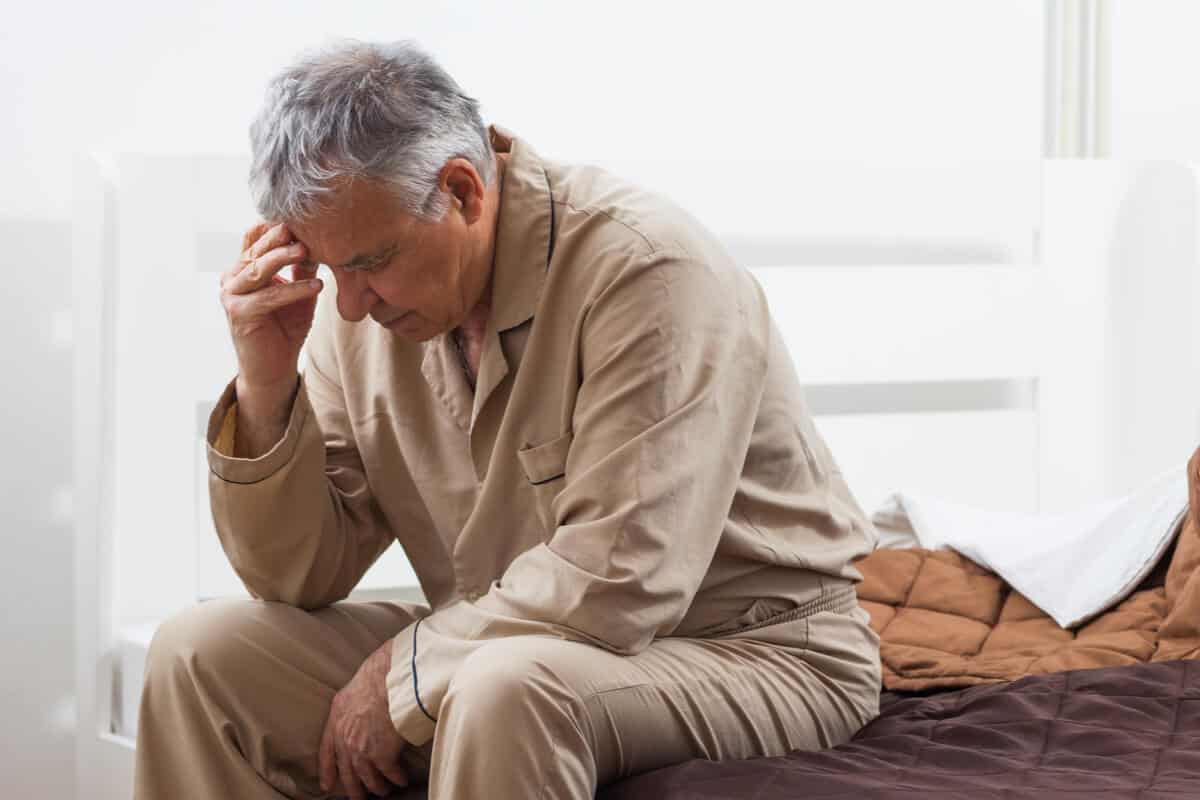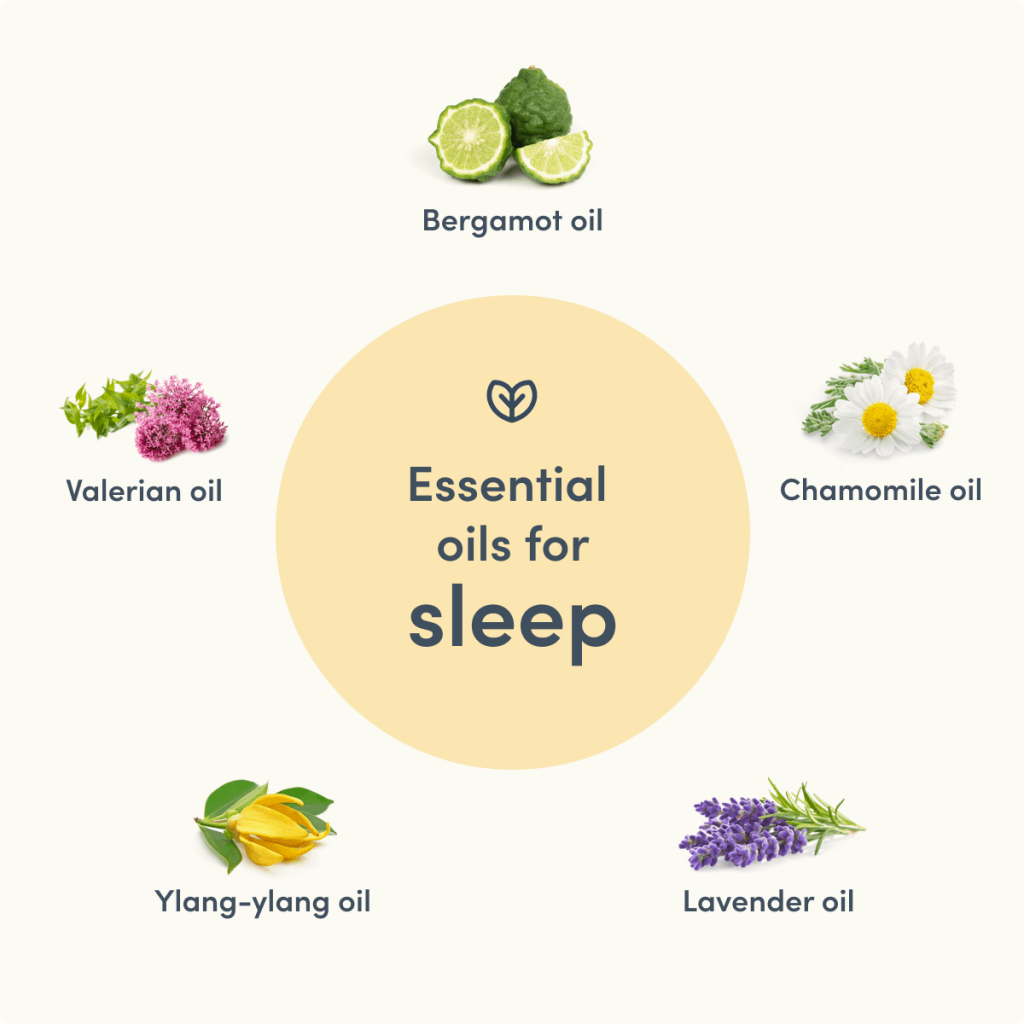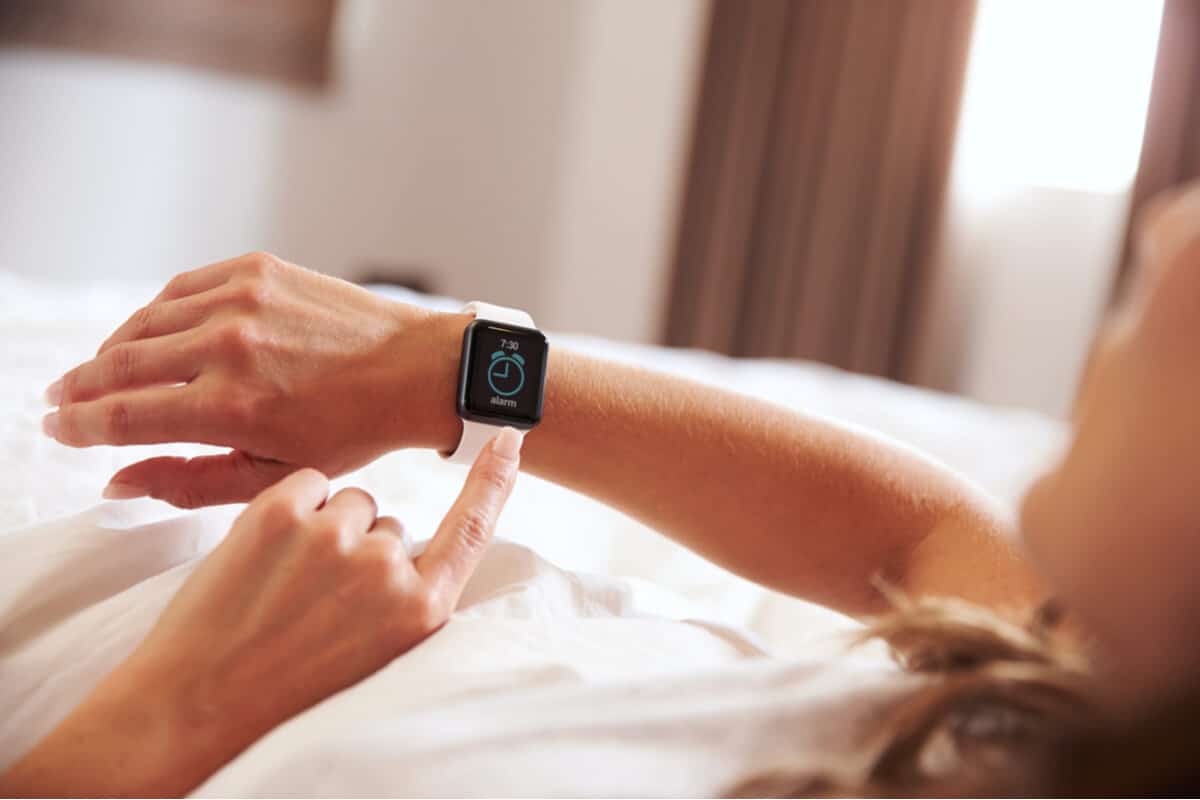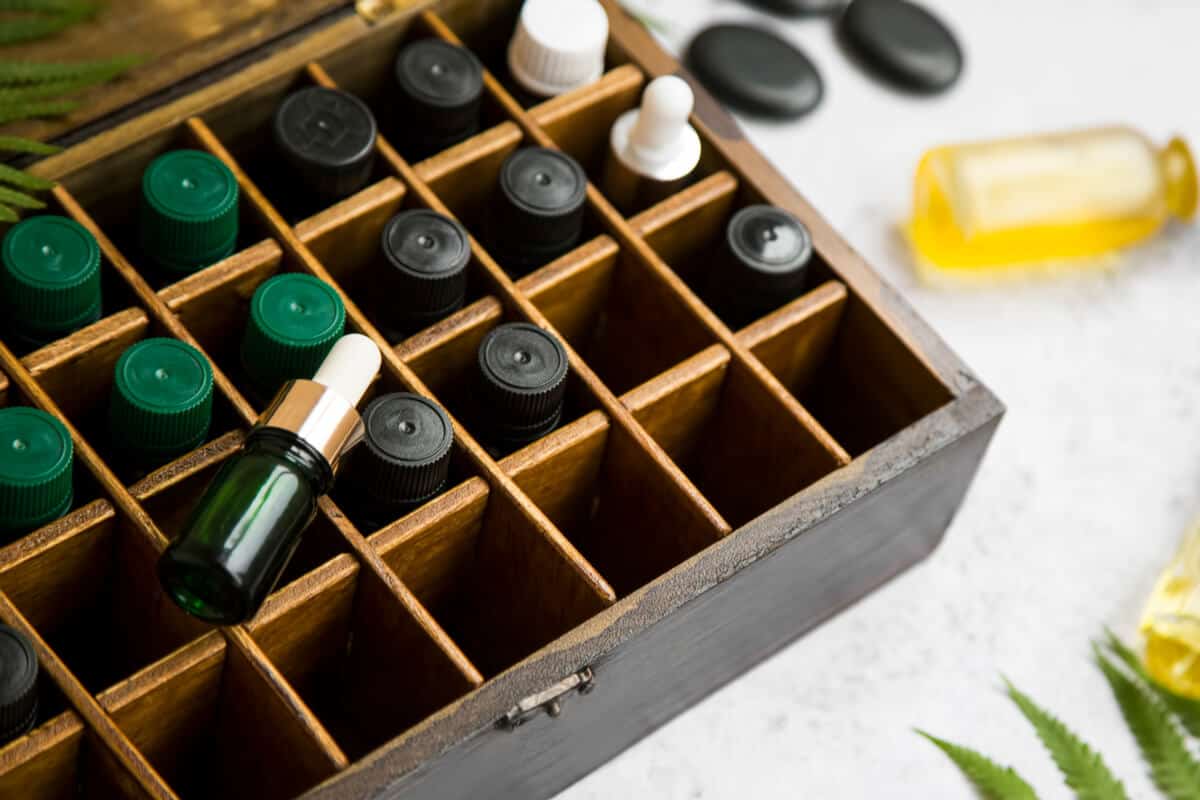What are essential oils?
Essential oils are highly concentrated plant extracts. These oils are typically separated from the plant via steam distillation for commercial or therapeutic uses. (18) As essential oils are highly volatile (evaporative), steam distillation uses water vapor to separate the oil from the plant. Volatile oils can be used therapeutically for many reasons. Some common application of essential oils include:- Bacterial, fungal, or viral infections
- Chronic pain
- Depression
- Insomnia
- Stress (21)
How to use essential oils for sleep
The compounds present in essential oils can promote an emotional or physiological reaction when inhaled or applied topically (directly to the skin). (21) There are many ways to use essential oils for sleep, and it’s generally recommended to begin use about 30 minutes before bedtime.Aromatherapy
Often, an essential oil diffuser is used to distribute the aromatic essence of these plant oils. Diffusers typically use cool water vapor to infuse the air around you with the oil. Once inhaled, volatile compounds in essential oils stick to our nervus olfactorius, the smell nerves in the back of our nasal cavity. (21) These nerves communicate closely with our brain’s limbic system and hypothalamus. (21) The limbic system shapes our emotions and memories, while the hypothalamus controls our hormones to influence functions like sleep and mood. (4)(15) To promote sleep using aromatherapy, place an oil diffuser near your bedside or spray your pillow with plant oils just before bedtime. It’s important to note that essential oils are quite potent and should be diluted with water when being used for aromatherapy. The general dilution ratio is about three to five drops of oil for every 100 mL of water. (9)Topical application
Applying essential oils topically can offer relief for some skin conditions such as acne, relax muscles, as well as induce sleep. (2)(12) When these oils are applied topically, their volatile nature allows them to be absorbed by the skin and enter the bloodstream. (21) Once circulating in our blood, essential oil compounds can make their way to our brain and communicate with our central nervous system. (21) A number of essential oils can cause skin irritation if applied alone. It’s recommended to dilute essential oils with a carrier oil or cream before applying them topically. Carrier oils are skin-friendly oils such as cocoa butter, coconut oil, or rosehip oil. The dilution ratio varies depending on the concentration needed. (9) It’s recommended to check with your integrative practitioner before using essential oils topically.
Several surveys suggest that approximately 35% of adults have problems initiating or maintaining sleep. (1) Elderly individuals are at a greater risk for sleeping problems. (17)
Best essential oils for sleep
Some essential oils promote wakefulness, while others offer sedative or anti-anxiety effects. Using the right oil or combination of oils before bedtime may be the key to a better night’s rest.
Bergamot, chamomile, lavender, ylang-ylang, and valerian are among the top essential oils for sleep.
Bergamot oil (Citrus bergamia)
With its spicy orange scent, bergamot has been used for decades in cooking and teas, but it may also offer pain-reducing and sleep-enhancing effects. (13) Primary animal model research indicates that bergamot modifies a specific nervous system receptor involved in the control of anxiety; this modification is associated with decreasing anxiety and inducing relaxation. (13) Clinical data also indicates that bergamot aromatherapy can significantly reduce stress-induced anxiety. (11) If you are having trouble sleeping due to tension in your life, bergamot may help you achieve a sound night’s sleep.Chamomile oil (Matricaria chamomilla)
Chamomile offers many healing properties and is used in traditional herbal medicine as a topical natural remedy for inflammation. Chamomile may also offer sedative effects when applied through aromatherapy. Preliminary studies indicate that chamomile inhalation slows the release of adrenocorticotropic hormone (ACTH), a hormone involved in the stress response. (16) Additionally, certain components found in chamomile may bind with stress receptors in the brain, contributing to the sedative effect of the herb. (16)Lavender oil (Lavandula angustifolia)
Lavender has been well studied for its calming properties. Thus far, data indicates that lavender may positively affect sleep quality and quantity. (5) A study of college students with sleep problems found that lavender aromatherapy when combined with sleep hygiene (good sleep habits) significantly reduced daytime fatigue. (5) The positive impact of lavender on sleep is well known, but the mechanism of action is less clear. Recent research indicates that lavender may influence melatonin levels, a hormone involved in regulating our body’s sleep-wake cycle. (10) A study in older adults found that lavender essential oil aromatherapy increased blood melatonin levels, which naturally decline with age. (20)
Maintaining a consistent sleep-wake schedule is one way to practice sleep hygiene. (5)
Valerian oil (Valeriana officinalis)
Valeriana species have been used as a natural remedy for insomnia and anxiety since the second century. (14) The most popular herbal sleep supplement in the United States and Europe, valerian can be consumed as a tea or supplement or used externally as an essential oil. (1) In vivo and in vitro studies have found valerian oil to have sedative and muscle-relaxing chemical compounds. (14) These properties were explored during a clinical trial involving intensive care unit (ICU) patients. Participants applied valerian essential oil to their inner wrists and feet in the evening, just before receiving acupressure. This traditional Chinese technique uses light pressure on specific acupoints to stimulate the flow of qi. (3) Qi is known in traditional Chinese culture as the energy of life. (3) Opening qi channels is thought to trigger healing and balance, and Chinese medical literature has identified more than 50 of these points to be related to sleep. (3) In this study, it was found using valerian oil in combination with acupressure shortly before bedtime positively influenced sleep quality in ICU patients. (3)Ylang-ylang oil (Cananga odorata)
Ylang ylang is a tree native to Asia whose flowers offer a tropical floral scent and a calming effect. Aromatherapy using ylang-ylang oil has been found to decrease alertness and significantly increase calmness. (8) This sedative effect may be attributed to its ability to decrease your heart rate. (18) Studies indicate that the way ylang-ylang is administered will impact its cognitive effect. Topical application of ylang-ylang has been found to be more effective for sleep than inhalation alone. (18)Safety considerations
Essential oils are highly concentrated and may cause harm if applied improperly. The quality and storage of these oils are also important in order to maintain potency. There are a few guidelines to follow when adding essential oils to your routine.Essential oil quality
Quality control of essential oils isn’t strictly regulated in the United States. (19) According to Dr. Robert Young, Ph.D., lecturer in plant chemistry and pharmacology, and Robert Tisserand, aromatherapy and essential oil research expert, it’s important to examine the bottle and label for a few key features.- Make sure the bottle is dark or tinted, as essential oils can become less effective if exposed to heat, oxygen, or light for prolonged periods. Typically, essential oils are found in dark amber or cobalt glass bottles.
- Scan the bottle for a statement about purity on the label or in the product description online. Essential oils should be 100% pure; if there is no purity statement, it’s likely that the oil has been mixed with something else.
- Look at the Latin name of the plant oil when available to make sure you are using the right species of plant. Some plants, such as lavender, have numerous species which may not all offer the same effects. (19)

Essential oils should be stored tightly sealed in a cool, dry place. (19) If properly stored, essential oils are effective for 1-2 years. (19)
Adverse effects
Many of the herbs used to produce essential oils are also offered in supplement form. However, essential oils are much more potent and should be used with some caution. Contact with the eyes should be avoided, and undiluted skin contact may cause irritation, itching, or burning. (22) Essential oils are generally not considered safe for ingestion. Symptoms of toxicity generally appear within about 30 minutes and can include:- Difficulty breathing
- Drowsiness
- Nausea or vomiting
- Seizures (22)
The bottom line
Essential oils may improve sleep quality and duration in those with sleep problems. Topical application with a carrier oil, or aromatherapy using an oil diffuser are excellent ways to use essential oils for better sleep. Try to practice sleep hygiene in conjunction with essential oil use for a well-rounded sleep regimen.- Bent, S., Padula, A., Moore, D., Patterson, M., & Mehling, W. (2006). Valerian for sleep: A systematic review and meta-analysis. The American Journal of Medicine, 119(12), 1005–1012.
- Cavanagh, H. M. A., & Wilkinson, J. M. (2002). Biological activities of lavender essential oil. Phytotherapy research: PTR, 16(4), 301–308.
- Chen, J.-H., Chao, Y.-H., Lu, S.-F., Shiung, T.-F., & Chao, Y.-F. (2012). The effectiveness of valerian acupressure on the sleep of ICU patients: A randomized clinical trial. International Journal of Nursing Studies, 49(8), 913–920.
- Dugdale, D. (2019). Hypothalamus. Medline Plus. https://medlineplus.gov/ency/article/002380.htm
- Lillehei, A. S., Halcón, L. L., Savik, K., & Reis, R. (2015). Effect of inhaled lavender and sleep hygiene on self-reported sleep Issues: A randomized controlled trial. Journal of Alternative and Complementary Medicine , 21(7), 430–438.
- Luyster, F. S., Strollo, P. J., Jr, Zee, P. C., Walsh, J. K., & Boards of Directors of the American Academy of Sleep Medicine and the Sleep Research Society. (2012). Sleep: A health imperative. Sleep, 35(6), 727–734.
- Medline Plus (2018). Doxylamine. https://medlineplus.gov/druginfo/meds/a682537.html
- Moss, M., Hewitt, S., Moss, L., & Wesnes, K. (2008). Modulation of cognitive performance and mood by aromas of peppermint and ylang-ylang. The International Journal of Neuroscience, 118(1), 59–77.
- National Association for Holistic Aromatherapy. (n.d.). Exploring aromatherapy. https://naha.org/explore-aromatherapy/about-aromatherapy/methods-of-application
- National Cancer Institute. (2011, February 2). NCI dictionary of cancer terms. https://www.cancer.gov/publications/dictionaries/cancer-terms/def/melatonin
- Ni, C.-H., Hou, W.-H., Kao, C.-C., Chang, M.-L., Yu, L.-F., Wu, C.-C., & Chen, C. (2013). The anxiolytic effect of aromatherapy on patients awaiting ambulatory surgery: A randomized controlled trial. Evidence-based complementary and alternative medicine: eCAM, 2013, 927419.
- Pazyar, N., Yaghoobi, R., Bagherani, N., & Kazerouni, A. (2013). A review of applications of tea tree oil in dermatology. International Journal of Dermatology, 52(7), 784–790.
- Rombolà, L., Scuteri, D., Watanabe, C., Sakurada, S., Hamamura, K., Sakurada, T., Tonin, … & Morrone, L. A. (2020). Role of 5-HT1A receptor in the anxiolytic-relaxant effects of Bergamot essential oil in rodent. International Journal of Molecular Sciences, 21(7).
- Şen, B., & Mat, A. (n.d.). Chemical and medicinal evaluations of the Valeriana species in Turkey.
- Shelat, A., M. (2020). Limbic system. (n.d.). https://medlineplus.gov/ency/imagepages/19244.htm
- Srivastava, J. K., Shankar, E., & Gupta, S. (2010). Chamomile: A herbal medicine of the past with bright future. Molecular Medicine Reports, 3(6), 895–901.
- Suzuki, K., Miyamoto, M., & Hirata, K. (2017). Sleep disorders in the elderly: Diagnosis and management. Journal of General and Family Medicine, 18(2), 61–71.
- Tan, L. T. H., Lee, L. H., Yin, W. F., Chan, C. K., Abdul, K.H., Chan, K. G., & Goh, B. H. (2015). Traditional uses, phytochemistry, and bioactivities of Cananga odorata (Ylang-Ylang). Evidence-based complementary and alternative medicine: eCAM, 2015, 896314.
- Tisserand, R., & Young, R. (2013). Essential oil safety – e-book : A guide for health care professionals. Elsevier Health Sciences. https://www.elsevier.com/books/essential-oil-safety/tisserand/978-0-443-06241-4
- Velasco-Rodríguez, R., Pérez-Hernández, M. G., Maturano-Melgoza, J. A., Hilerio-López, Á. G., Monroy-Rojas, A., Arana-Gómez, B., & Vásquez, C. (2019). The effect of aromatherapy with lavender (Lavandula angustifolia) on serum melatonin levels. Complementary Therapies in Medicine, 47, 102208.
- Watanabe, E., Kuchta, K., Kimura, M., Rauwald, H. W., Kamei, T., & Imanishi, J. (2015). Effects of Bergamot (Citrus bergamia) essential oil aromatherapy on mood states, parasympathetic nervous system activity, and salivary cortisol levels in 41 healthy females. Complementary medicine research, 22(1), 43–49.
- Western Australia Department of Health. (n.d.). Essential oils – Health warning. https://healthywa.wa.gov.au/Articles/A_E/Essential-oils





